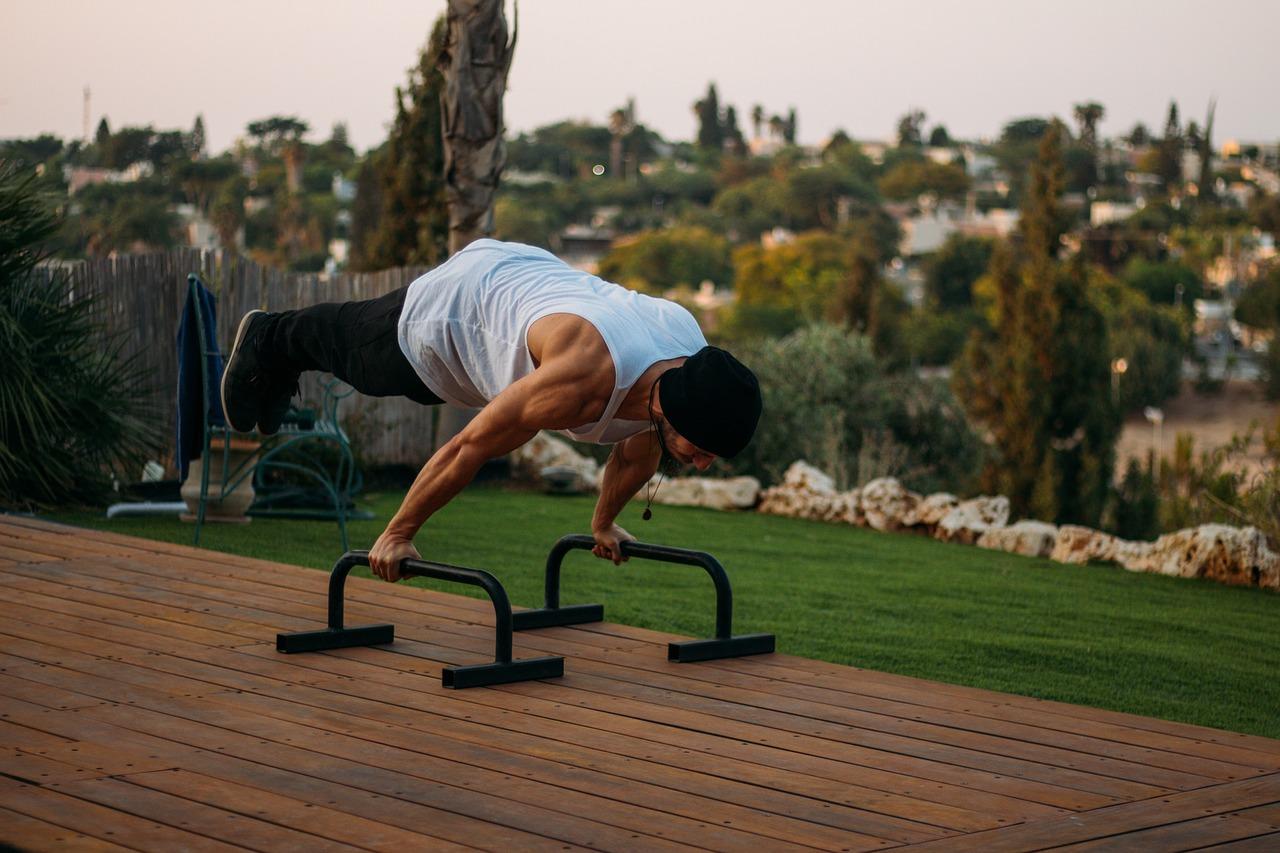The most important thing about making a workout plan is always going to be making the right workout plan for you. It is often said that the best workout plan is the one you stick to, and there is much truth to this! A workout plan should always be tailored to you, especially when it comes to calisthenics.
Since calisthenics uses your bodyweight instead of other weights as resistance to movements, finding the exact right exercises to incorporate into your workout to make it the correct difficulty for you can be a real challenge.

After all, depending on your fitness level and your body type, something that constitutes a beginner exercise for someone else might be an intermediate one for you. Meanwhile, the inverse can also be true!
You may find an exercise significantly easier than someone else, causing you to avoid what someone calls an intermediate exercise if you are a beginner, when in reality it would be perfect for you.
As such, what we will recommend here today is not the exact exercises you should include in your plan, but rather ways you could structure your plan and give some suggestions on how you could build a calisthenics strength training program.
It doesn't make sense to try and say exactly what exercises will work the best for you, and especially when it comes to calisthenics, you can expect the plan to be changing quite regularly in terms of the actual exercises.
However, what will hopefully not change is the routine! Fitness is very much about habits, and if you are at all like me then that means going to the gym at the same time every day on the same schedule.
Making your plan suit your time but also make you actually want to spend your time working out as part of your routine is the best way to make it a habit, and once it becomes a habit is when you will really start to see progress.
There are a lot of different calisthenics exercises you can incorporate in your workout routine.

What would a good example of a beginner calisthenics workout program look like?
How one chooses to split up their workouts will vary from person to person, based on a wide range of factors. Especially as a beginner, making sure you are splitting it up in a way that is easy and convenient to you is vital.
For example, if you want to work out in a gym, then it's best to plan around how this will work for your schedule. If you are like me and struggle with focus but live quite close to a gym, you can go every day for more regular and focused workouts.
An hour a day every day, of course, with regularly scheduled rest days at least once a week as well! However, if you live further from a gym or find exercising in more extended sessions works best for you, then you should plan your workouts around this.
You might find it best to work out on alternating days, instead doing two hours a day every other day. Of course, there are levels to the pattern that you can likely see emerging. You can't just do seven hours of exercise on one day and then do none for the rest of the week!
It's very important to space your workouts out appropriately to give your muscles time to rest and repair themselves after a workout, which is why it's good to alternate muscle groups.
Don't forget to look up the benefits of calisthenics to make sure this is the right workout for you.
What is a good split for a beginner calisthenics workout routine?
You may have heard people talking about splits before when it comes to exercise, and in this context that means splitting up which muscle groups you train on each day. In practise, that means grouping muscles that are trained by the same exercises together.
For example, when you do a pull-up, this engages your biceps and back at the same time, which is why we group the biceps and back together when it comes to creating a workout program.
There are traditionally three groups that will form a standard split, being:
- push
- pull
- legs
An example of a push calisthenics exercise are push-ups, an example of a pull exercise would be pull-ups, and a leg exercise would be a bodyweight squat.
Of course, there are many, many variants of these, and your calisthenics routine will likely involve multiple variants of each as you progress through various difficulties.
But how should you split these up? Well, this varies from person to person, but it is usually recommended to split it such that each category gets a single day dedicated to it, and is then given a few days to rest afterwards.
My own split, for example, consists of push day, then leg day, then pull day, then a rest day, and I repeat this four day cycle over and over. This split allows at least three days of rest for each muscle group between each time it has to work, which allows for maximum muscle mass growth.
However, you can split it any way you like as long as it allows adequate rest and suits your schedule.
If you are working out on alternate days for example, you could do a two-hour push workout, then a rest day, then a two-hour pull workout, then another rest day, and then a two-hour legs workout on the fifth day. There really is no single correct answer on how you split things up!
What is a good example of an intermediate calisthenics workout program?

The nice thing about progressing from a beginner to an intermediate strength training workout is that you don't actually have to change any of the structure. The best way to change the difficulty of your workout is to add more reps to your sets, add more sets, and decrease the time between your sets.
Of course, it's very important to make sure none of this comes at the expense of technique! After all, there's no use doing 10 sets of 50 reps if each set and rep is sloppy, and you would be much better off doing a more normal 3 sets of 10 reps, and making each set a good one.
You can apply a similar philosophy to exercises that don't actually have movements, such as a plank. While you increase the intensity of squats and push-ups by increasing the number of reps, you can increase the difficulty of a plank by increasing the number of seconds you hold the position for.
Keeping the technique and precision will only increase your calisthenics skills.
What is a good split for an intermediate calisthenics workout program?
As with the beginner workout program, the split should remain roughly the same for a more intermediate program!
The usual push-pull and legs split continues to be an effective one, though as you progress on your fitness journey you can of course start to tailor this more specifically to your needs.
For instance, you might choose to split it up with an upper body day focusing on push and pull, and then a lower body day focusing on core and legs.
The function this would perform is allowing for longer workouts back to back, for example a two-hour workout on the first day, a two-hour workout on the second day, and then a rest day either side.
You might even decide you want to split things down further, for example having a separate day for chest and triceps rather than incorporating them both into your push or upper body day.
Really, all of the making a good workout plan is about making one that feels natural for you, rather than following one you find online.
Especially when it comes to calisthenics and instead of varying weight you exclusively use your own bodyweight in the movements!
How do I increase the difficulty of my workouts beyond intermediate level?
If you want to increase the difficulty level of your workouts beyond this, be that in the exercises you perform on a given day or the specific muscle groups you target, the easiest way is again to focus on increasing the number of sets and reps.
While with traditional weight training you can increase weight, with calisthenics you cannot really increase your bodyweight to make the exercises harder, thus meaning you have to increase the number of sets and reps instead.
You can also reduce the time between sets, as this will give you less recovery time and increase the intensity as well.
It would be worth to research the conversations for calisthenics vs weight training so you can have more oversight.

Of course, coming up with a calisthenics workout plan for your exact body type, skill level, fitness, and needs is never going to be easy. You can't just copy a one-size-fits-all program, and you will need to come up with something tailored to you. However, this doesn't have to be a challenge!
A few sessions with a Superprof personal trainer, either online or face to face, can be a great starting point, and can help you develop a training plan perfectly suited to your needs.
And with many of the personal trainers right here on Superprof offering their first training session for free, there's never been an easier time to get started on your calisthenic fitness journey, so reach out to one today!
















Great article. I’m 78 years old and have had cancer twice. I have to work out to keep my weight up because my stomach was removed.l do weights and calisthenics. So far it’s working.
Hi Tabor, We are so glad you enjoyed the article. Keep up the good work!